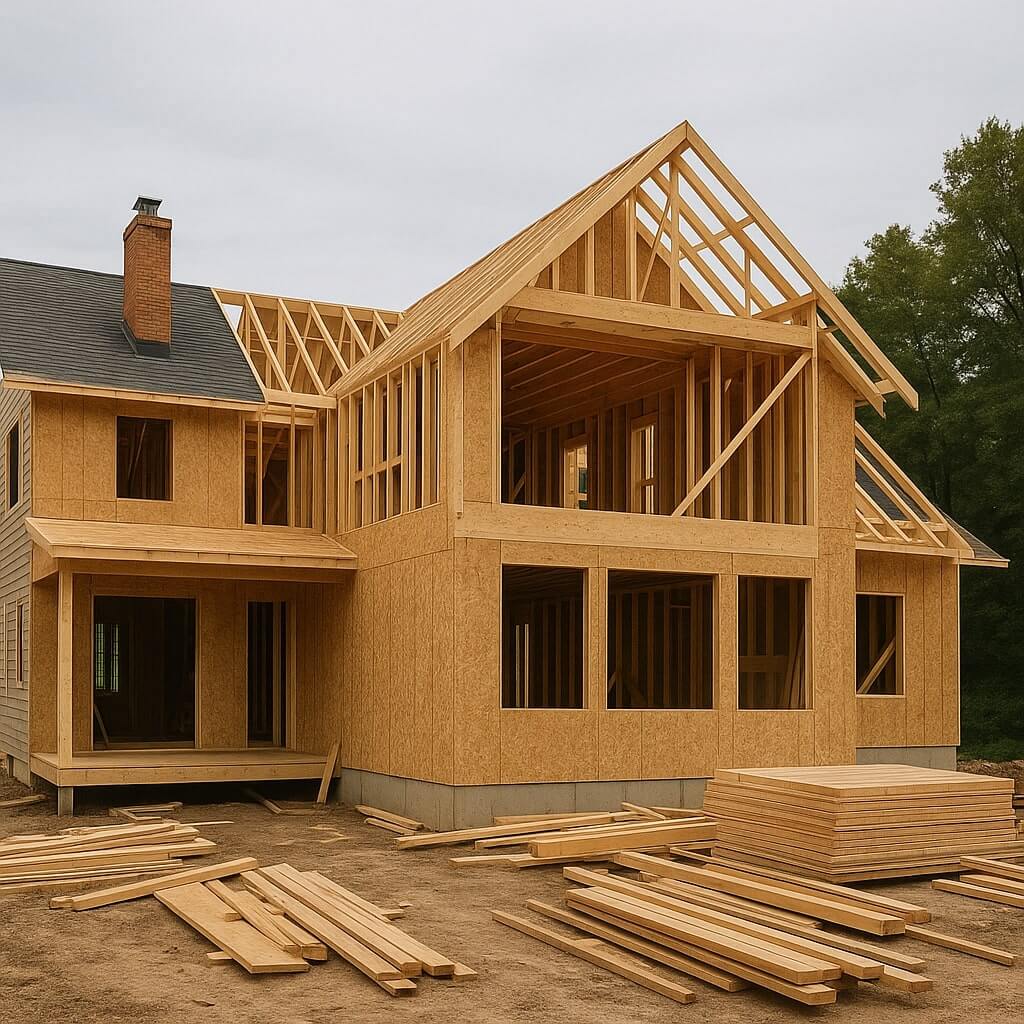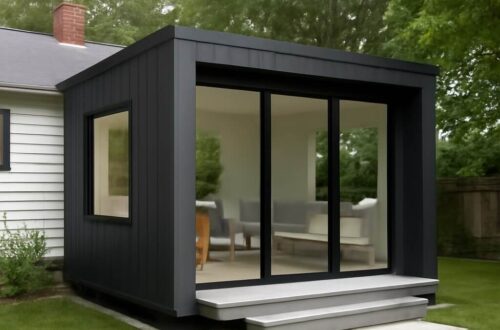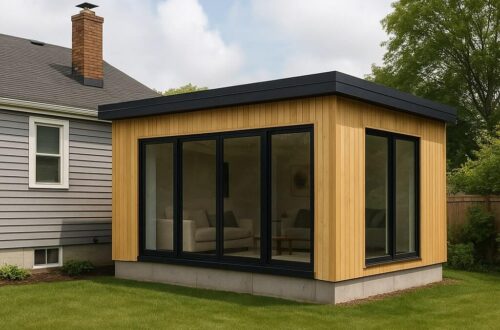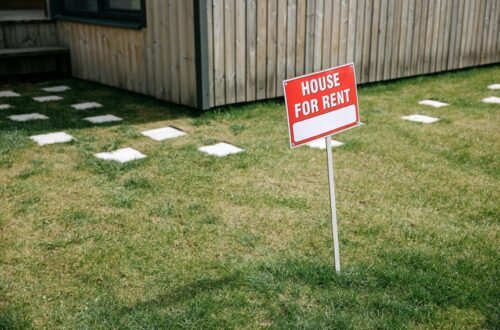When it comes to adding extra space to your home, the roofline plays a significant role in both the aesthetic and functional aspects of your extension. A well-designed roofline can enhance your home’s overall look, improve energy efficiency, and provide ample natural light. Whether you’re adding a second story, expanding your living space, or simply enhancing an existing room, choosing the right roofline for your home addition is essential.
In this article, we will explore several creative roofline ideas that can transform your home addition, making it not only functional but also a beautiful and integral part of your house’s design.
Types of Rooflines for Home Additions
Before diving into creative ideas, it’s important to understand the different types of rooflines available for home additions. Here are some popular roofline styles:
1. Gable Roof
The gable roof is one of the most common and timeless roofline styles for home additions. It is characterized by two sloping sides that meet at a central ridge. Gable roofs are ideal for both modern and traditional home styles, offering ample space for attic storage or extra living space in upper-level additions.
2. Hip Roof
A hip roof slopes on all four sides, giving a home a more rounded, box-like appearance. This type of roofline is durable, weather-resistant, and provides a more balanced, symmetrical look. It’s perfect for home additions that aim to complement existing structures without overwhelming the design.
3. Mansard Roof
The mansard roof features a four-sided design with steep slopes on the lower section and a flat or slightly pitched top. This roofline adds character and elegance to your home addition, making it perfect for second-story additions where extra headroom is necessary.
4. Flat Roof
Flat roofs have become increasingly popular for modern home additions due to their minimalist, clean aesthetic. This style provides a sleek, contemporary look and can be used to create rooftop gardens, patios, or solar panel installations, maximizing space and energy efficiency.
5. Shed Roof
A shed roof is a single sloping roofline, often used in modern or industrial-style home additions. It’s simple yet functional, providing a contemporary, asymmetrical design. This style works well for home extensions that aim to achieve a unique and cutting-edge look.
6. Butterfly Roof
The butterfly roof has two sloping sections that meet in the middle, resembling the wings of a butterfly. This type of roofline is ideal for home additions that want to stand out with a bold, artistic design. It is also highly practical, as the center depression can collect rainwater, which can be used for irrigation.
Creative Roofline Ideas for Home Additions
Now that we’ve covered the basic roofline styles, let’s delve into some creative roofline ideas that can take your home addition to the next level.
1. Combination Rooflines for Unique Appeal
One of the best ways to enhance the look of your home addition is by combining different roofline styles. For instance, you can pair a gable roof with a flat roof for a modern yet traditional look. This combination adds visual interest and depth to your addition, making it feel more integrated with the existing home.
2. Vaulted Ceilings for Spacious Interiors
If you’re looking to enhance the interior of your home addition, consider opting for a vaulted ceiling. A vaulted roofline provides extra height and a sense of spaciousness. It is an excellent choice for living rooms, kitchens, or even bedrooms, where you want to create an airy, open environment.
3. Green Roofs for Sustainability
For environmentally-conscious homeowners, a green roof is an excellent choice. A green roof incorporates plants and vegetation, offering natural insulation and reducing energy costs. Not only does it create a stunning visual, but it also helps with stormwater management and air quality. This roofline is perfect for eco-friendly home additions.
4. Cantilevered Rooflines for Extra Space
A cantilevered roof extends beyond the walls of the home, providing shade and protection to outdoor areas while offering a modern and bold look. This roofline is perfect for extending your living space without adding additional weight to the foundation. It’s particularly useful for adding overhangs to patios or creating a more dynamic structure for your addition.
5. Overhanging Eaves for Character
Overhanging eaves add a sense of depth and character to your home addition. They also provide shade to windows, which can help reduce cooling costs during hot months. This roofline style works well with gable or hip roofs, creating a more traditional feel while still adding practical benefits.
6. Skylights and Roof Windows for Natural Light
Adding skylights or roof windows to your home addition is an excellent way to maximize natural light. Not only will it make your new space brighter, but it can also enhance the mood and energy of the room. Roof windows are particularly effective for spaces like kitchens, bathrooms, and staircases, where light can often be limited.
Benefits of a Well-Designed Roofline
Choosing the right roofline for your home addition offers several advantages. Some of the benefits include:
1. Enhanced Curb Appeal
A well-thought-out roofline adds to the overall curb appeal of your home. A stylish roofline can make your home look more polished and cohesive, increasing its attractiveness and value.
2. Increased Property Value
A high-quality home addition with a carefully designed roofline can significantly increase the market value of your home. Buyers are often drawn to properties with architectural appeal and functional space, making it a worthwhile investment.
3. Improved Energy Efficiency
The right roofline can improve your home’s energy efficiency. Features such as overhanging eaves, skylights, and green roofs help to regulate indoor temperatures, reducing the need for air conditioning and heating, which can lower energy bills.
4. Maximized Use of Space
Creative roofline designs can help maximize the functionality of your home addition. By incorporating elements like vaulted ceilings, cantilevered roofs, or roof windows, you can enhance the usable space in your addition, making it feel more expansive.
FAQ
For a second-story addition, a gable or mansard roof is ideal, as it allows for more headspace and gives a classic, balanced look. These rooflines can also be easily integrated with the existing structure.
Yes, flat roofs are becoming increasingly popular for modern residential home additions. They offer a clean, minimalist design and can be used to create rooftop terraces, gardens, or solar panels.
A butterfly roof adds a unique, dramatic flair to the interior of the addition, providing plenty of vertical space. The central depression can also be used to channel rainwater for reuse.
Overhanging eaves provide shade, protect windows from the elements, and contribute to better energy efficiency by reducing heat gain during summer months.
Conclusion
When planning a home addition, the roofline plays a crucial role in defining the design, functionality, and overall appeal of the space. By carefully considering the various roofline options, you can create an addition that not only complements your home’s existing architecture but also maximizes space, enhances energy efficiency, and increases property value. From classic gable roofs to sustainable green roofs, there are endless creative possibilities to transform your home with the right roofline.
Take the time to explore different styles and ideas to find the perfect fit for your home addition, and you’ll enjoy a functional and stylish space for years to come.






